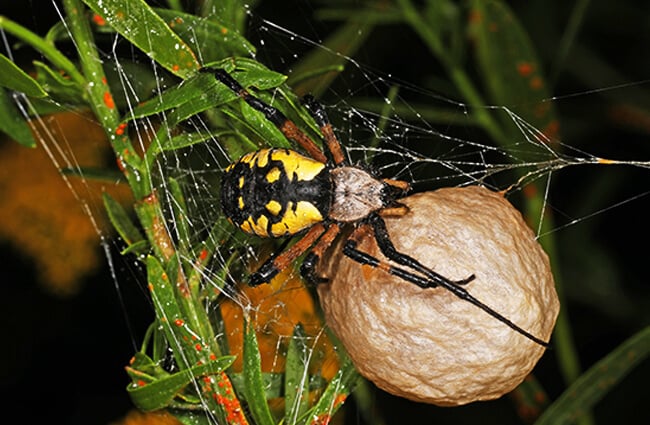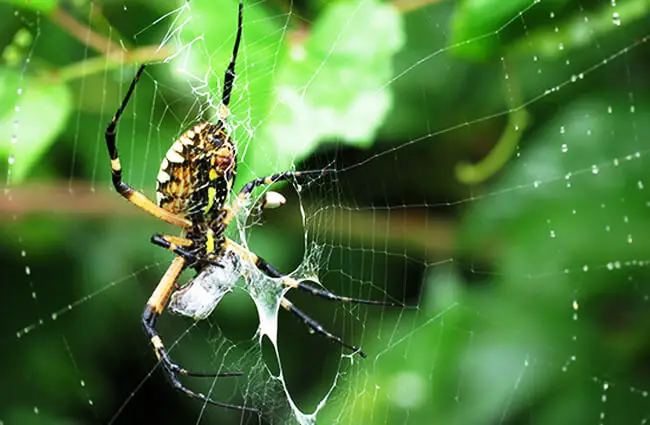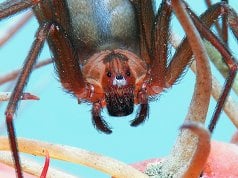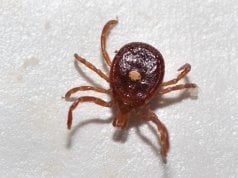In the intricate tapestry of nature, few creatures capture the imagination quite like the spider. Among them, the Garden Spider stands out as a true marvel, a vibrant jewel often found adorning our green spaces with its magnificent, silken architecture. Far from being a creature of fear, this arachnid is a diligent guardian of our gardens, a master engineer, and a fascinating subject for anyone curious about the natural world.
Meet the Garden Spider: Nature’s Master Weaver
The Garden Spider, most commonly referring to species within the genus Argiope, particularly the striking Black and Yellow Garden Spider (Argiope aurantia) in North America, is an unmistakable presence. These spiders are renowned for their impressive size, vivid coloration, and the distinctive, often zigzag-patterned stabilimentum woven into the center of their orb webs. Their scientific name, Argiope, is derived from Greek mythology, referring to a nymph, perhaps hinting at their elegant, almost mythical appearance.
For the animal lover eager to spot one, Garden Spiders are surprisingly accessible. They thrive in sunny, somewhat sheltered areas with abundant vegetation, making gardens, meadows, and the edges of woodlands their preferred domains. Look for their large, circular webs strung between plants, shrubs, or even along fences and eaves. They are most active during late summer and early autumn, when females reach their full size and construct their largest webs.

The iconic web, often spanning several feet, is a testament to their engineering prowess. The stabilimentum, a dense, silken zigzag pattern, is a hallmark of many Argiope species. While its exact purpose is still debated among scientists, theories suggest it might deter birds from flying through the web, attract insect prey by reflecting UV light, or even help camouflage the spider itself. Regardless of its primary function, it adds an artistic flair to an already impressive structure.
Despite their formidable appearance and large size, Garden Spiders are remarkably docile. They are not aggressive and will typically flee or drop from their web if disturbed. For a hiker who encounters one, the best course of action is simply to observe from a respectful distance. There is no need for alarm; these spiders pose no threat to humans. Their venom, while effective on insects, is mild and causes only minor, localized discomfort if a bite were to occur, which is exceedingly rare.
A Closer Look: Biology and Behavior
Physical Characteristics and Identification
Garden Spiders exhibit pronounced sexual dimorphism. The female is the star of the show, boasting a large, bulbous abdomen that can reach up to an inch in length, often adorned with striking patterns of yellow, black, and sometimes orange or silver. Her legs are long and robust, typically black with yellow or reddish bands. The male, by contrast, is significantly smaller, often less than a quarter of the female’s size, and far less colorful, usually a drab brown or black. This size disparity is a crucial aspect of their reproductive strategy.

The Art of the Orb Web
The construction of an orb web is a feat of biological engineering. Garden Spiders typically build a new web every day, often consuming the old one to recycle the valuable proteins in the silk. The process begins with a bridge line, often carried by the wind, followed by radial spokes that converge at a central hub. Finally, the spider lays down the sticky spiral threads that will capture prey. Different types of silk are used for different purposes: strong, non-sticky dragline silk for the frame and radii, and elastic, sticky capture silk for the spiral. The stabilimentum, as mentioned, is a unique addition, often repaired or rebuilt daily along with the rest of the web.
Diet and Predation: An Insectivore’s Life
Garden Spiders are obligate carnivores, primarily feeding on a wide array of insects that become entangled in their sticky webs. Their diet includes grasshoppers, crickets, flies, moths, bees, and wasps. Once prey is caught, the spider quickly immobilizes it by injecting venom and then wraps it tightly in silk, creating a neat package for later consumption. This wrapping behavior is not just for storage; it also prevents the struggling insect from damaging the web. This efficient predation makes them invaluable allies in natural pest control within ecosystems.

Life Cycle and Reproduction: A Delicate Dance
The mating process for Garden Spiders is a high-stakes affair for the diminutive male. He must approach the much larger, potentially predatory female with extreme caution, often plucking the web threads in a specific rhythm to signal his intentions. After a successful courtship, which may involve the male transferring sperm with his pedipalps, the female will produce one or more egg sacs. These sacs are spherical, made of tough, papery silk, and often camouflaged or suspended in a protected location near the web. Each sac can contain hundreds of tiny eggs. The female guards these sacs until cold weather sets in, after which she typically dies. The spiderlings hatch inside the sac and overwinter there, emerging in the spring to disperse, often by “ballooning” on strands of silk carried by the wind, a remarkable journey for such tiny creatures.

The Garden Spider’s Place in the World
Ecological Role: Guardians of the Garden
Garden Spiders play a vital role in their ecosystems. As efficient predators of insects, they help regulate insect populations, preventing potential outbreaks of agricultural pests. They are a natural, chemical-free form of pest control, contributing to healthier plant communities. In turn, Garden Spiders themselves serve as a food source for various animals, including birds, lizards, and predatory insects, integrating them firmly into the food web. Their presence is often an indicator of a healthy, balanced environment.
Evolutionary Journey: An Ancient Lineage
Orb-weaving spiders, including the Garden Spider, represent an ancient and highly successful lineage within the arachnid world. Their characteristic circular webs are thought to have evolved over tens of millions of years, a testament to the efficiency and effectiveness of this hunting strategy. Fossil evidence suggests that orb-weavers were present during the Jurassic period, showcasing a long evolutionary history of adapting to various environments and perfecting their silk-spinning abilities. The complex behaviors associated with web building and reproduction are deeply ingrained, refined through countless generations of natural selection.

Interactions with Humans and Culture
For centuries, spiders have held a complex place in human culture, often oscillating between fear and fascination. Garden Spiders, with their striking appearance, have inspired various myths and folklore. In some cultures, spiders are seen as symbols of creativity, patience, and destiny, owing to their intricate web-weaving. While some people harbor arachnophobia, the Garden Spider’s generally benign nature and beneficial role in pest control often lead to a more positive interaction. Many gardeners appreciate their presence, recognizing them as natural allies. They are a reminder that even the most seemingly intimidating creatures can be harmless and incredibly valuable.
Fascinating Facts and Expert Insights
Did You Know? A Compendium of Curiosities
- Daily Web Rebuild: Many Garden Spiders dismantle and rebuild their entire orb web every single day, often at dawn or dusk, a process that can take less than an hour.
- Silk Strength: Spider silk is one of the strongest natural fibers known, pound for pound stronger than steel, and remarkably elastic.
- Ballooning Babies: Young Garden Spiders disperse by “ballooning,” releasing a strand of silk into the wind and floating away, sometimes for miles, to find new territories.
- Vibrational Communication: Males communicate with females by plucking the web threads, sending specific vibrations to signal their presence and intentions.
- Stabilimentum Variations: While often a zigzag, the stabilimentum can take various forms, including spirals or crosses, and its presence can vary even within the same species.
- Nocturnal Eating: Garden Spiders often consume their old web at night, recovering proteins and moisture from the silk before building a fresh one.

Caring for Garden Spiders in Captivity
For an aspiring zoologist or zookeeper interested in observing Garden Spiders up close, keeping them in captivity can be a rewarding experience, provided their specific needs are met. The goal is to replicate their natural habitat as closely as possible.
- Enclosure: A spacious terrarium (at least 10-gallon for a single female) with plenty of vertical space is essential. Provide sturdy branches, twigs, or artificial plants for web anchors. Good ventilation is crucial.
- Substrate: A simple substrate like coco fiber or peat moss helps maintain humidity.
- Temperature and Humidity: Maintain a temperature range of 70-80°F (21-27°C) and a humidity level of 60-70%. Misting the enclosure daily or every other day helps.
- Lighting: Natural indirect light is sufficient. Avoid direct sunlight which can overheat the enclosure.
- Feeding: Offer live insects such as crickets, grasshoppers, or large flies every 2-3 days. Ensure the prey is appropriately sized, not larger than the spider’s abdomen. Remove uneaten prey promptly to prevent stress or injury to the spider.
- Water: Misting provides water droplets for the spider to drink. A small, shallow water dish can also be provided but is not strictly necessary if misting is consistent.
- Avoid:
- Overhandling: Garden Spiders are delicate and easily stressed. Minimize handling.
- Chemicals: Keep the enclosure away from pesticides, aerosols, and other harmful chemicals.
- Cohabitation: Do not house multiple Garden Spiders together, especially females, as they are territorial and cannibalistic.
- Inadequate Space: A cramped enclosure will stress the spider and prevent proper web construction.
- Lack of Web Anchors: Without suitable anchor points, the spider cannot build its essential hunting web.
Observing a Garden Spider in a controlled environment offers unparalleled insight into its web-building, hunting, and reproductive behaviors, making it an excellent subject for study.
From the intricate geometry of their webs to their vital role in maintaining ecological balance, Garden Spiders are truly captivating creatures. They remind us that even the smallest inhabitants of our world possess incredible complexity and contribute significantly to the rich tapestry of life. So, the next time you encounter one of these magnificent weavers, take a moment to appreciate the silent, tireless work of nature’s own master architect.






![Red Angus Closeup of a beautiful Red Angus cowPhoto by: U.S. Department of Agriculture [pubic domain]https://creativecommons.org/licenses/by/2.0/](https://animals.net/wp-content/uploads/2020/03/Red-Angus-4-100x75.jpg)

